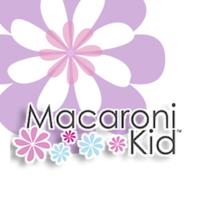From baby foods, to juice products, breakfast cereals, snack bars, rice cakes and white and brown rice, your pantry is most likely filled with measurable, or large, amounts of inorganic arsenic. Even some vegetables, fruits and tap water may contain harmful levels of the poison.
According to a 2012 article in Consumer Reports, a "single serving of some rices could give an average adult almost one and a half times the inorganic arsenic he or she would get from a whole day's consumption of water, about 1 liter." (The standard arsenic level for drinking water is considered to be 10 parts per billion (ppb), which is twice the proposed safe limit established by the Environmental Protection Agency and adopted by the state of New Jersey).
An article by the not-for-profit consumer watchdog organization,Environmental Working Group (EWG) states that in 2001, "the National Academy of Sciences estimated that people drinking arsenic-contaminated water at 10 parts per billion would have a 1-in-300 risk of developing cancer over their lifetimes. Recent research suggests that people ingest about that much arsenic in a just a half-cup serving of rice, not an unusual amount for millions of Americans," and adds that many, "rice-based foods and some fruit juices have arsenic levels much higher than are allowed in drinking water."
Some infant rice cereals may contain arsenic levels up to 5 times higher than those found in oatmeal--an alarming statistic considering how many infants are fed rice cereals as their first food.
"Given our findings," states the Consumer Reports article, "we suggest limiting the consumption of rice products."
EWG suggests varying your family's diet to include alternatives to rice-based foods, including barley, Bulgar, polenta, quinoa and couscous. Other suggestions for reducing the amount of potential arsenic consumption include washing your rice thoroughly before cooking, boiling brown rice in a pasta pot with a large amount of water and reducing or eliminating snack or protein products that contain rice syrup as a sweetener. Limit your child's daily intake of fruit juice to a half-cup or less, feed your baby oatmeal instead of rice cereal, and avoid using rice milk as a dairy substitute. In addition, they suggest those with wells have their drinking water tested for arsenic and consult their local health department if the levels are high.
Resources
For a list of dietary recommendations and suggestions to avoid arsenic contamination in your food, including a downloadable pdf chart showing the amounts of arsenic levels in different foods, visit Consumer Reports.org.
For more informatin on environmental health issues and research on issues that affect your family, as well as information on how you can become an advocate for better living, visit the Environmental Working Group (EWG) site.


